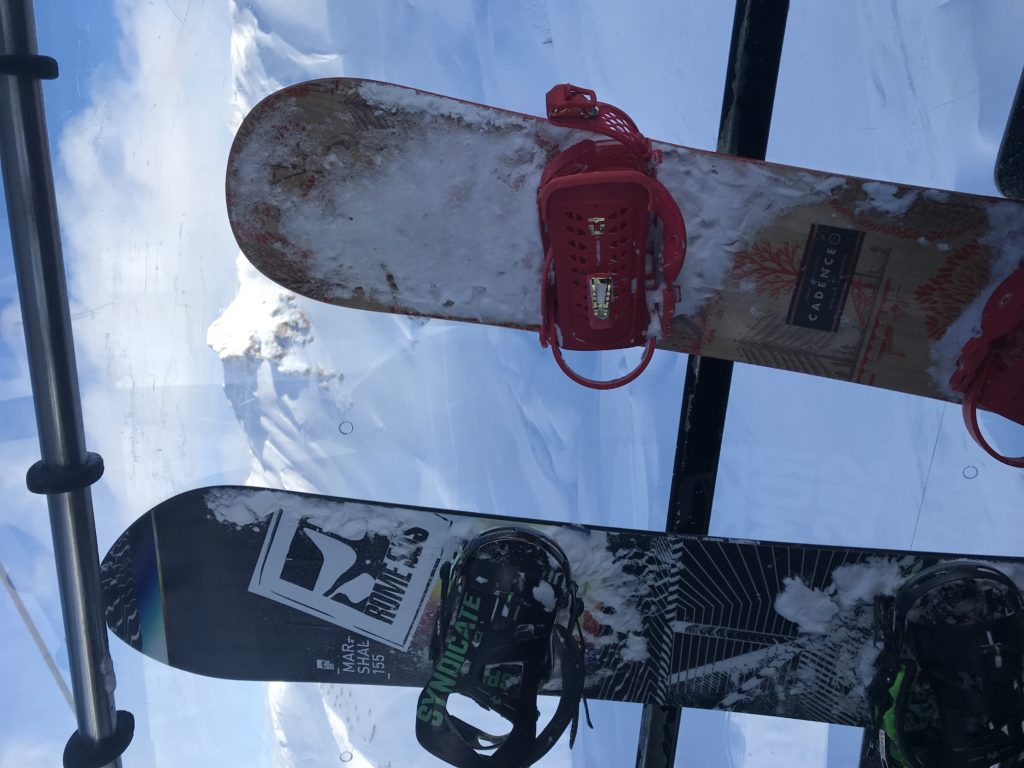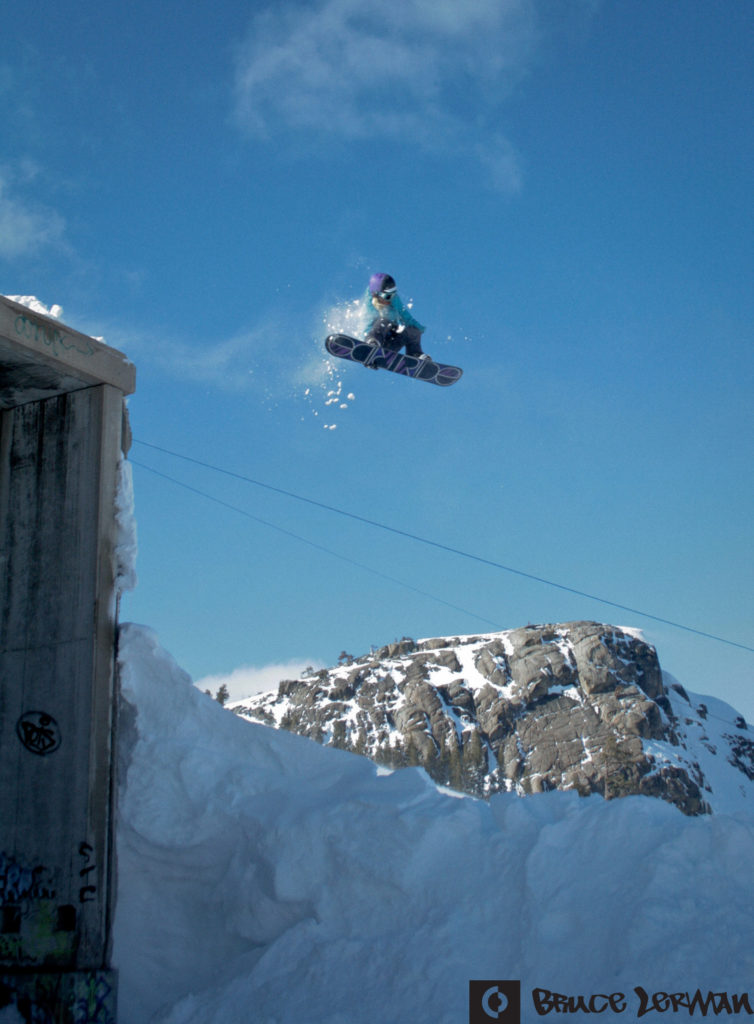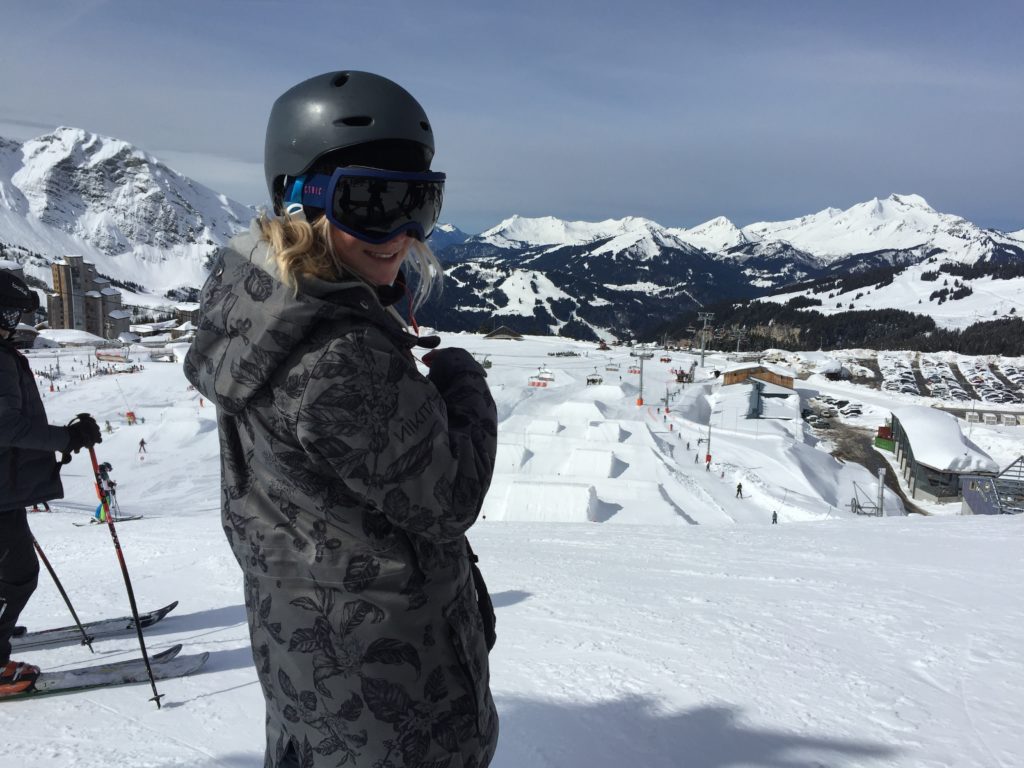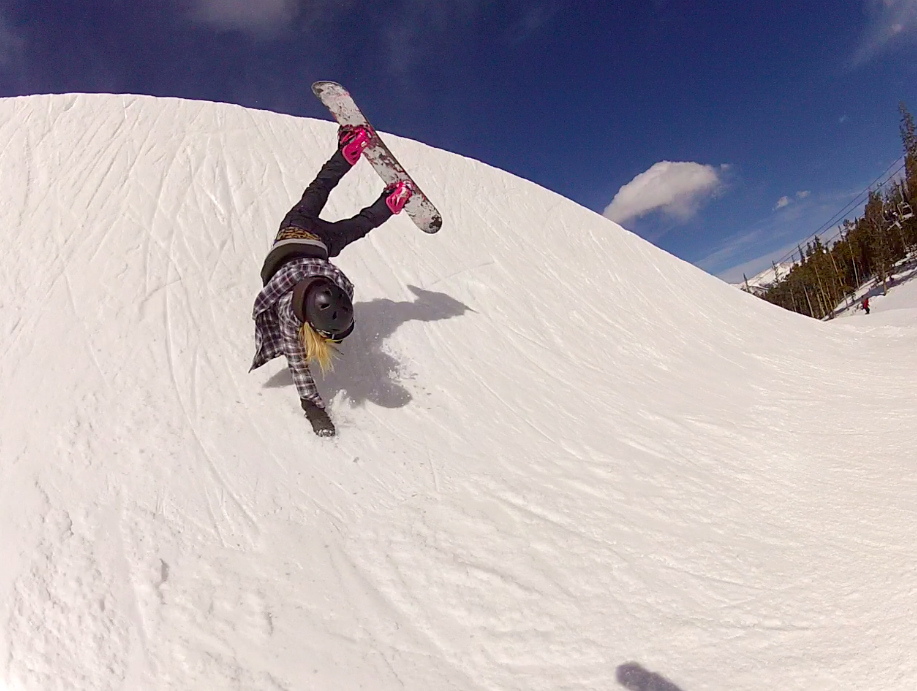Snowboarding can seem like another world sometimes. To those that are involved in this unique subculture, its language and know-hows are second nature. For those on the outside, it can appear alien and somewhat overwhelming.
There are so many terms/ rules/ words/ expressions/ etiquettes to learn, where on earth do you start?
Here is my A-Z of the Snowboard lingo to help you swat-up and sound semi cool and down-with-the-kids!
A is for Avalanche
These are the scariest most dangerous natural disastrous to happen in the mountain. Avalanches are snow slides where a big slab of snow on top of a weaker layer of snow, breaks off and slides down the mountain. This can take out everything in its path, including snowboarders. Take time to assess the conditions before you ride and never go off-piste on your own/ without transceivers/ when its sketchy.
B is for Boarding
This is an abbreviation for “snowboarding” i.e. “we are going boarding today” or “I’m a boarder”. But weirdly, “boarding” is actually a less cool abbreviation and its actually better to stick to “snowboarding” if you want to be down with the kids!
C is for Carving
If you’ve heard the term “carving” before you probably will think of skiers. Carving is actually way better on a snowboard in my opinion. You apply a lot of pressure onto you’re edge on the turn and you will feel grip and power as you cut across the slope. If it’s a good carve, you will end up travelling back up the slope! The Euro carve is a BIG thing in snowboarding right now. Bringing back the 80s.
D is for Downhill
Always give way to the downhill rider. This is the etiquette to keep people safe on the mountain. The uphill rider can see what’s going on so therefore its up to them to avoid the downhill riders who can’t see them. It’s kind of like driving I guess.
E is for Edges
These refer to the edges on the side of your snowboard. Keeping these sharp is good for turning and gripping in icy conditions. They allow you to hold a turn better and even carve if you feel urge. Edges are good for racers (Boardcross) and for Half Pipe riders who need to grip onto icy walls. However, park riders may want to blunt their edges off as they can catch on rails easily. You can sharpen your edges at different angles depending on what sort of snowboarding you are doing. The normal is 90’

F is for Freestyle
Freestyle Snowboarding is a type of snowboarding where you perform tricks. These can be done in the terrain park on jumps and rails and various other manmade obstacles. You can also do tricks on the piste and in the street, anywhere! That’s the beauty of it….it’s so freeeeeee!!! Freestyle is also now an Olympic discipline, named “Slopestyle”. This is when the riders have to go down a course of kickers and rails executing tricks. Points are given for difficulty, style, landings and how the run links together. Falling over loses so many points so the competitors can choose to play it safe or just GO FOR IT!!!
G is for Gnarly
This is going balls out, wild, crazy, defying all odds, living on the edge with your snowboarding. For example, doing a triple back flip over a river of hungry crocodiles whilst in a snowstorm, on your own. NB: this is not recommended.

This is the definition of gnarly
H is for Heliboarding
This is probably one of the ultimate goals for many snowboarders. Especially if you get to do it somewhere like Alaska. A helicopter takes you to untouched, inaccessible and wild freeride locations, where the snow is EPIC. You go with an experienced guide and you need some pretty high-tech equipment and you need to be pretty competent at snowboarding. This once in a life time experience can be expensive but I would say one for the bucket list for sure.
I is for Ill
You may have heard the term “sick”?! i.e.; something was sick= really really bloody good! Well “ill” is like the next level to this. When someone first told me something was “ill” I got really worried, but now I know that I haven’t got the flu and actually I did something half decent on my snowboard!
J is for Jibbing
Jibbing is a term related to Freestyle Snowboarding. It’s a more “relaxed” style of snowboarding where you perform tricks on a smaller scale on rails or just on the piste….not the big scary jumps. Piste jibbing is particularly good fun on those days where you don’t feel like “having it large” but still want to do freestyle and mess around. You can do 180s, butter, presses and ollies (and much more). Jibbing on the piste is also a good progression for terrain park riding.

K is for Kickers
A kicker is another name for a jump, it “kicks” you up in the air. These are normally found in the terrain park and there are normally lots of different sizes so you can progress your snowboarding in stages. They will be given a colour to signify their difficulty (green, blue, red, black…black being the hardest). They can be shaped in different ways too; most snowboarders will have a favourite style of kicker. There are whippy ones, table tops, step-ups, step-downs and big old wedges. The aim is to snowboard off the kicker, do a trick in the air, then land in the sweet spot and ride away clean. You can also build your own kickers to practice on.

L is for Love Ski
Hello Romeo and Juliet. This is when two star crossed lovers take a romantic “ski” (also snowboard) ALONE together. They cover the mountain hand in hand, glove in glove, mitten in mitten, tackling the terrain as a team. They may stop for a candle lit hot chocolate together and maybe even an Eskimo kiss. Who says romance is dead?!
M is for Mother Nature
The queen of the mountains, the ruler of them all. Don’t cross her, don’t anger her, don’t defy her. Mother nature needs to be respected listened to. All snowboarders are big believers in this.
N is for “No friends on a powder day”
Sounds harsh but is actually an unwritten rule in snowboarding that if there is AMAZING fresh snow and powder everywhere, then you don’t have to wait around for mega snowboard faffers (i.e.; mates that have forgotten lift passes, mates with broken bindings, mates that can’t decide how many layers to wear!!). It sounds selfish but you know they would do the same to you if it was the other way around. Scoring fresh powder becomes number one priority.

No friends on powder day!
O is for Ollie
Not your mate Ollie, a different one. An Ollie is a small jump performed on your snowboard to make you go up into the air. An Ollie is actually the base of ALL freestyle snowboarding tricks. Once you have perfected an Ollie, you can build up your bag of tricks from there.
P is for Piste
You may have heard people talk about the piste??! However, this does not refer to having too many beers. The piste is the part of the mountain that you can snowboard on. The pistes are marked out with poles/ flags and every night, the piste-bashers (diggers on snow) flatten them down and even them out to make them nice to ride on again the next day. Off-piste is the part of the mountain that isn’t marked out. The perks of this is not as many people ride on it so the snow is normally better. The downside is its way more dangerous, hence why it’s not marked as a safe area. NB. Your insurance will cover you on the piste but if something happens off-piste you may not be covered.
Q is for Quarter Pipe
A smaller version of a half pipe, normally just one wall that curves almost vertically up. Good to session as a group and good to do hand plants on!

R is for Rat or Park Rat
This is actually quite a flattering metaphor. A Park Rat is a snowboarder who spends all their time in the park doing tricks. You may even find them in the park on a powder day, now that is a TRUE park rat!

I am a park rat
S is for Sketchy
A word used for when something isn’t safe. This can refer to the conditions, the terrain, the park etc but can also refer to the actual snowboarder. He/ she might have a “sketchy” style (look out of control) or they have just done a sketchy trick (only landed it by the skin of their teeth!) or hit a sketchy park feature (one that doesn’t have enough speed to clear it). Generally, if something is sketchy I tend to stay away from it.
T is for Tripods
A fun little trick to try on the mountain is a snowboard tripod. You face back up the hill and place both hands on the ground either side of the nose of your snowboard. You then lift the tail of your board up into the air, almost vertical, so your nose of your board is the only part on the snow. You then go down the mountain like this! I guess you look like a tripod?!
U is for Urban
Part of the freestyle family, like the cool cousin part??! You can literally snowboard anywhere (with snow), including in the streets of a town. i.e: the urban environment. It is a trend of snowboarding that has become so popular over the years and is almost an rebellious act to normal mountain snowboarding…”I don’t need a mountain, I don’t need a lift pass, I don’t need a terrain park etc”. It makes snowboarding more like skateboarding and more accessible to everyone. Plus, its really fun, you can create your own freestyle park!

V is for Vert
Or vertical drop. Measures how much distance a snowboarder has covered in a day/ week/month etc. Also can be used to describe the elevation of snowboarding (high ski resorts/ low ski resorts) or what angle something is at (how “vert” is the half pipe?).
W is for Whiteout
Term used for a weather condition when it’s such bad visibility that you can’t even see your own hand in front of your face. It’s really hard to snowboard in these conditions. The snow/ fog is so thick that you feel like you are in a little white bubble…until you see a tree whizz past at 90mph and realise you are actually still moving. You can buy certain lenses for your goggles to see better in these conditions, or just suck it up and go for a hot chocolate and try again tomorrow.
X is for Xgames
The Xgames is the ultimate goal for many competitive snowboarders. It is a world class slopestyle competition. They also hold events for many other extreme and action sports. It’s a really respected event and once you have won an Xgames medal you can pretty much tell everyone you have made it in life!

Y is for Yolo
“You only live once” or “Yolo” is an expression you will hear a lot of snowboarders saying. It almost sums up a typical snowboarder’s mentality. You’ve got to live in the moment and go for it, test your limits and scare yourself. I think it’s a good attitude to have as your life will always be exciting!
Z is for Zeach
When a snowboarder tries to slide a long a rail/ box at 90’ (board slide/ front board etc) but doesn’t quite make the full 90’. This is super uncool and embarrassing! This term was inspired by Zack Leach who did it all the time.
QUICK FIRE! S is for SNOWBOARDING but also:
Sweet Spot- The best place to land after a jump
Sick- When something is uber cool
Switch- Riding with your “wrong” foot forwards
Shredding- Another word for snowboarding
Stomp- When you land a trick really clean
Slash- A big turn to kick up loads of snow
Ski Bum- Doing a season without working
Session-When you have lots of goes on an obstacle
Side Slip-Going down the mountain on one edge
Stash- Wooden park!
Slushy- When the snow is really watery and like porridge
Shushing- Adopting a crouched up position to go faster
Side Cut- The amount your snowboard is curved in at the sides
Skiers Left- The left as if the skier is looking down the mountains
Skiers Right- The right as if the skier is looking down the mountains
Skiers Thumb- A ligament injury but snowboarders can get it too!
Snow Blade- Don’t do it EVER
Straight line- Turning is for tourists, just go straight
Speed Demon- Someone who LOVES going fast
Stomp Pad- A grippy pad you put on your snowboard for your other foot to rest on when one-footing
Snowboard Taco-When you fall on your belly, folding in half over a rail. OUCH